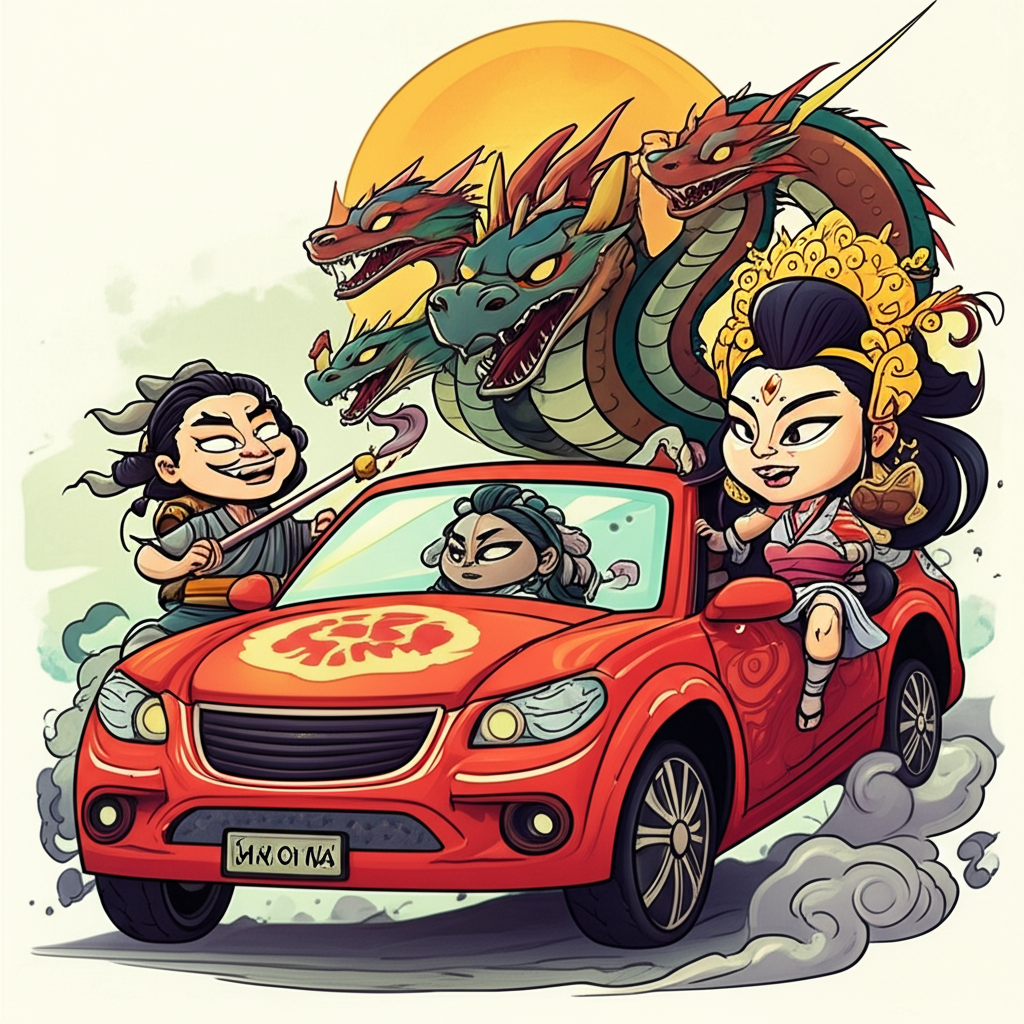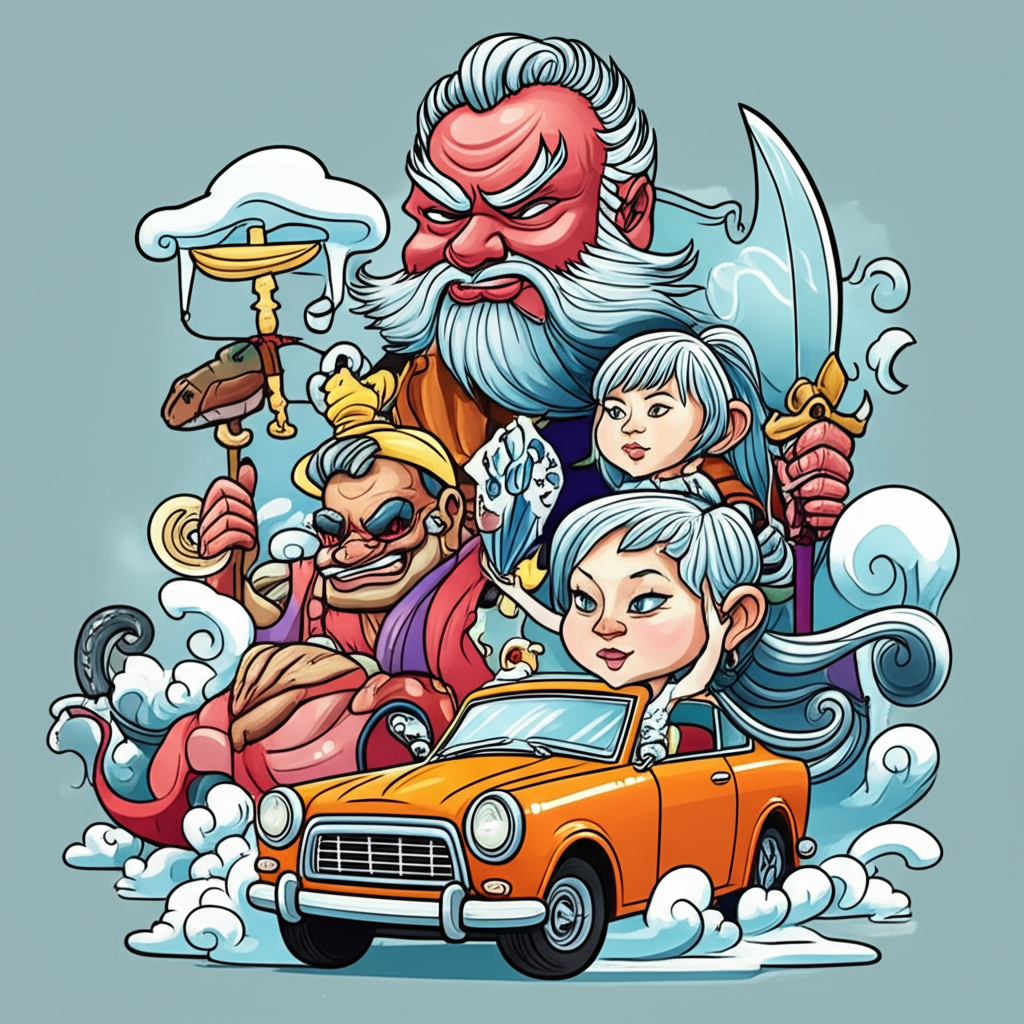
In the tapestry of human history, cultures have woven countless narratives to explain the world around them, to grapple with the unknown, and to impart wisdom across generations. Among these ancient tales, the myths of Japan stand out for their vibrant imagery and their deep connection to the natural world. One such enduring legend, passed down through generations, tells of Amaterasu, the revered sun goddess, and her eventual triumph over the colossal serpent, Yamata-no-Orochi. This is not a chronicle of divine intervention as a matter of faith, but rather an exploration of a foundational story from Japanese folklore, offering a glimpse into the worldview of ancient peoples.
The origins of this myth are rooted in the Kofun period and the subsequent Asuka and Nara periods of Japanese history, roughly spanning from the 3rd to the 8th centuries CE. This was a time when Japan was solidifying its identity, developing its unique Shinto beliefs, and beginning to record its history and mythology in texts like the Kojiki and the Nihon Shoki. The society was largely agrarian, deeply intertwined with the cycles of nature – the life-giving sun, the bountiful harvests, the destructive storms, and the lurking dangers of the wild. Their understanding of the world was animistic; spirits, or kami, were believed to inhabit natural phenomena, objects, and even abstract concepts. The world was a dynamic place, often unpredictable, and these myths served as a framework to comprehend and navigate its complexities, to explain the origins of things, and to establish societal order and values.
At the heart of this tale is Amaterasu Omikami, the celestial deity associated with the sun. In these ancient narratives, she is depicted as the supreme goddess of the Shinto pantheon, emanating from the divine realm of Takamagahara, the High Plain of Heaven. Her symbolic attributes are multifaceted: she represents the life-giving warmth and light of the sun, crucial for the survival and prosperity of the land. She embodies order, harmony, and righteous governance, often seen as the progenitor of the imperial lineage. Her association with the sun also imbues her with qualities of brilliance, clarity, and a watchful presence over the mortal world.
Opposing this radiant force is Yamata-no-Orochi, a monstrous serpent of immense size and terrifying power. This creature is typically described as having eight heads and eight tails, its body so vast that it coils across numerous valleys. Its presence signifies chaos, destruction, and primal fear. Yamata-no-Orochi often represents the untamed forces of nature, perhaps the destructive power of floods or earthquakes, or the overwhelming dangers that threatened ancient settlements. Its symbolic attributes include brute strength, insatiable hunger, and a destructive potential that casts a shadow over the land and its inhabitants.
The narrative unfolds with a sense of dread pervading the land of Izumo. Yamata-no-Orochi, in its insatiable demand, had terrorized the mortal realm for years, demanding a yearly sacrifice of eight young maidens from the local families. The god Susanoo-no-Mikoto, Amaterasu’s impetuous brother, found himself in Izumo, having been banished from heaven. Though initially portrayed as a tempestuous and somewhat wayward deity, Susanoo, upon hearing of the serpent’s horrifying tribute, decided to confront the beast.
According to the legend, Susanoo devised a cunning plan. He instructed the local people to brew a potent sake, eight vats of it, and place them outside their homes. He then concealed himself, waiting for the monstrous serpent to arrive. As Yamata-no-Orochi, drawn by the intoxicating aroma, approached, it dipped each of its eight heads into a vat of sake, drinking greedily. The powerful brew soon overcame the serpent, lulling it into a deep, stuporous sleep. Seizing this opportune moment, Susanoo emerged from his hiding place and, with his mighty sword, began to hack away at the slumbering beast. He severed each of its eight heads, then its eight tails. In one of the serpent’s tails, Susanoo discovered a magnificent sword, later presented to his sister, Amaterasu, as a symbol of his victory and his renewed allegiance. This sword, known as Kusanagi-no-Tsurugi, became one of the Imperial Regalia of Japan.
This myth, like many ancient stories, is rich with layers of symbolism. Amaterasu’s withdrawal into a cave, a prelude to the Orochi story, often symbolizes periods of darkness or societal despair, from which her return brings renewed light and order. The defeat of Yamata-no-Orochi can be interpreted as the triumph of divine order and human ingenuity over the destructive forces of nature and chaos. Susanoo’s actions, though born of a somewhat rougher nature, represent the courage and resourcefulness required to confront overwhelming threats. The eight maidens symbolize innocence and the vulnerability of humanity in the face of powerful, uncontrolled forces. The potent sake can be seen as a metaphor for cunning and strategy, a way to overcome brute strength with intelligence. The discovery of the sword within the serpent’s tail suggests that even in the heart of destruction, valuable lessons or symbols of power can be found.
In contemporary times, the legend of Amaterasu and Yamata-no-Orochi continues to resonate. It is a staple of Japanese literature, art, and performance. The characters and events are frequently depicted in manga, anime, video games, and films, often reimagined with new interpretations and artistic styles. In cultural studies, the myth is examined for its insights into ancient Japanese societal values, their relationship with the natural world, and the development of their religious and political structures. It serves as a powerful reminder of the enduring human fascination with tales of heroism, the battle between good and evil, and the quest for order in a sometimes chaotic existence.
It is crucial to reiterate that the story of Amaterasu and Yamata-no-Orochi is a cultural narrative, a product of ancient imagination and storytelling traditions. It is a testament to the creativity and the worldview of the people who first shared it. As Muslims, we recognize that only Allah (God) is the true Creator and Sustainer of all that exists. Our understanding of reality is grounded in the divine revelation and the teachings of Islam. However, by studying these ancient myths, we gain a profound appreciation for the diverse ways in which humanity has sought to make sense of the world and to express its deepest aspirations and fears. These stories, when viewed through an educational and cultural lens, offer valuable insights into the rich tapestry of human heritage, the power of imagination, and the timeless tradition of storytelling.





